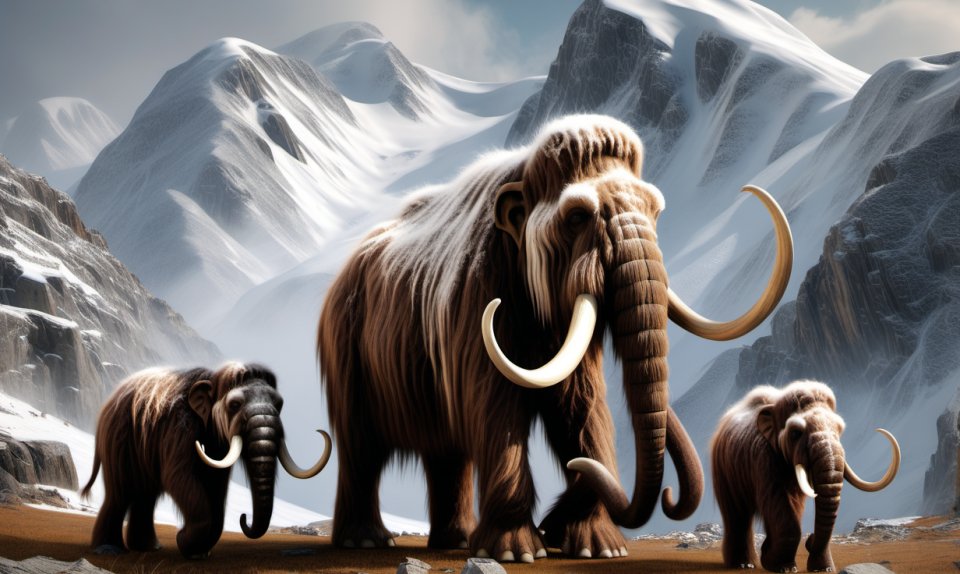Should we bring wooly mammoths back to life? | ECOVIEWS
Q. What do you think about the efforts by geneticists to re-create mammoths and mastodons and let them live in Siberia or northern Canada where they once thrived?
A. The project you’re asking about involves woolly mammoths rather than mastodons.
Mastodons, like woolly mammoths, were relatives of elephants, but they were more distantly related genetically to modern elephants than the woolly mammoths were.
Representatives of both, however, were alive as recently as 10,000 to 12,000 years ago. One reliable report states that in the Arctic Ocean on Wrangel Island, within 300 miles of Alaska, an isolated population of woolly mammoths persisted up to 4,000 years ago.
More: Martin Luther King Jr. Day brings an environmental lesson | ECOVIEWS
Cloning presents practical and ethical dilemmas to be sure. First is the question of whether such a project is feasible at the genetic level. Can it even be done?
In the simplest terms, the plan is to use DNA from frozen mammoths and implant embryos in Asian elephants (the closest living relatives of mammoths) as surrogate mothers. The genetic challenges are incredibly complex, and the scientists involved in the effort are to be commended for working through the intricate details.
We learned from "Jurassic Park" that such plans are technically possible. Although "Jurassic Park" was fiction (I hope), the genetic concept is believable, and some brilliant minds are working to make it happen.

Also on the practical side, consider that the last time woolly mammoths and mastodons shared a large part of Earth with humans, they did not fare so well (though it may not have been entirely people’s fault). Today, many species face dwindling population sizes, with some even headed toward extinction. Why would we think a new set of giant creatures roaming around would meet a better fate?
Woolly mammoths, one of several extinct species of elephant-like creatures, roamed the northern tier of the globe for more than 2 million years including the most recent Ice Age.
For the last few centuries of their existence, woolly mammoths overlapped with humans. A hunting party successfully bagging a full-grown mammoth would presumably be clan heroes, as everyone could dine on steaks for weeks. Living in a refrigerator-cold environment would make preservation an easy task.
Scientists debate the reasons for the ultimate extinction of woolly mammoths, with hypotheses ranging from overhunting to a meteoritic impact that caused climate and habitat changes. Whatever the explanation for the wooly mammoth’s demise, carcasses with viable DNA have been found in Siberia.

Navigating the maze of genetics and successful incubation of woolly mammoth embryos seems possible within the realm of modern scientific knowledge. However, what to do with a herd of gigantic herbivores requiring an arctic climate pushes the envelope of practicality.
Do we just release them into Siberia, northern Canada and Alaska to let them fend for themselves? Not a chance that would happen.
Today’s approach to wildlife management is to keep close tabs on every individual if possible. And anyone who thinks international politics would not come into play does not follow the same news programs the rest of us do.
Who would be held responsible when a rogue woolly mammoth charges out of Kazakhstan and crushes a Mongolian family in their yurt? Furthermore, what about the economic aspects, which are nearly limitless. I feel certain some enterprising wildlife conservation society is already developing their Adopt a Woolly Mammoth program.
The ethical implications may be more complex. They involve various perspectives and opinions, including this idea: just because we can do it doesn’t mean we should.
How much ought we tamper with the creation of life simply because we know how to manipulate genetic codes? In fact, might the possession of such a wealth of genetic knowledge make society more complacent about standing by while today’s animals go extinct?
Are we comparable to spoiled children who destroy the toys they have with no compunction because their indulgent parents will buy them new toys whenever they want?
Whit Gibbons is professor of zoology and senior biologist at the University of Georgia’s Savannah River Ecology Laboratory. If you have an environmental question or comment, email ecoviews@gmail.com.
This article originally appeared on The Tuscaloosa News: Should we bring wooly mammoths back to life? | ECOVIEWS

